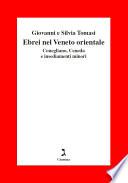
Cerca negli ebook:


Guida scematica della città di Trieste

Guida topografica degli stabili della Citta di Trieste
Autore: Ed Kisvarday

La nuova Scuola elementare della Comunità israelitica, Fondazione I.S. Morpurgo, Trieste
Numero di pagine: 22
Verso casa
Autore: Michael Morpurgo
Numero di pagine: 192
War horse
Autore: Michael Morpurgo
Numero di pagine: 174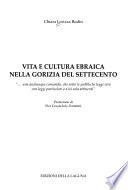
Vita e cultura ebraica nella Gorizia del Settecento
Autore: Chiara Lesizza Budin
Numero di pagine: 148
Diplomatici e personalità ebraiche a San Marino (XIX - prima metà XX sec.)
Autore: Cristina Ravara Montebelli
Nella pubblicazione “Diplomatici e personalità ebraiche a San Marino (XIX-prima metà XX sec.)”, l’autrice Cristina Ravara Montebelli analizza dettagliatamente la vita di 21 personalità di cultura ebraica, vissute prevalentemente nel XIX secolo, tracciandone le biografie inedite oppure integrando quelle già edite, ma soprattutto mettendo in evidenza gli stretti legami con la Repubblica di San Marino. Alcuni personaggi hanno risieduto stabilmente in Repubblica o hanno avuto proprietà nel territorio sammarinese, come il ricco mercante pesarese trasferitosi a Venezia, Laudadio Gentilomo, proprietario di una casa in Contrada Santa Croce e antenato di Margherita Sarfatti. Altre sono personalità politiche di fama internazionale, come Luigi Luzzatti, Ministro del Tesoro italiano, "amorevole e sapiente instauratore delle finanze sammarinesi", al quale la Repubblica ha anche dedicato una medaglia commemorativa, e che sono state insignite di onorificenze sammarinesi per benemerenze varie nei confronti della Repubblica. Il nucleo più importante è però rappresentato dai Consoli o Incaricati d’Affari della Repubblica in sedi estere, fra i quali troviamo, solo per citarne...
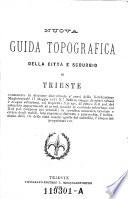
Nuova guida topografica della citta e suburbio di Trieste (etc.)
Autore: Antonio Castellanovich
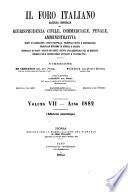
Il foro italiano
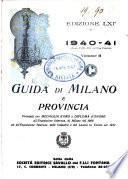
Guida di Milano e provincia
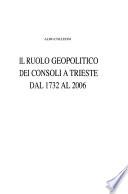
Il ruolo geopolitico dei consoli a Trieste dal 1732 al 2006
Autore: Aldo Colleoni
Numero di pagine: 1661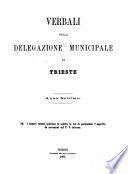
Verbali della Delegazione Municipale di Trieste
Autore: Triest
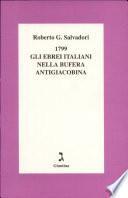
1799
Autore: Roberto G. Salvadori
Numero di pagine: 123The invasion of northern and central Italy by Napoleon's army in 1796 resulted in an exacerbation of the chronic economic crisis of northern Italy and in a deterioration of the already harsh living conditions of the Italian peasants. Between 1796-99 several uprisings took place throughout the country against the occupiers. The Jews, who had been favored by the French with dissolution of the ghetto and the granting of civil rights, were seen as allies of the French. They became the object of the peasants' hatred, fueled by traditional negative stereotypes about Jews. Several Jewish communities suffered attacks; in some places, Jews were murdered and their property was destroyed. Only in 1800 did the French succeed in quelling the uprising and restoring order.
![Guida degli amministratori e dei sindaci delle società anonime, delle casse di risparmio, degli Enti parastatali ed assimilati [Biografia finanziaria italiana]](https://cdn1.scaricarelibri.net/images/libro/guida-degli-amministratori-e-dei-sindaci-delle-societa-anonime-delle-casse-di-risparmio-degli-enti-parastatali-ed-assimilati-biografia-finanziaria-italiana-id-s3v641v6dmsC.jpg)
Guida degli amministratori e dei sindaci delle società anonime, delle casse di risparmio, degli Enti parastatali ed assimilati [Biografia finanziaria italiana]
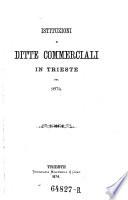
Istituzioni e ditte commerciali in Trieste
Autore: Giuseppe Edoardo Hattinger
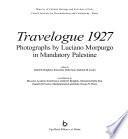
Palestina 1927
Autore: Luciano Morpurgo
Numero di pagine: 293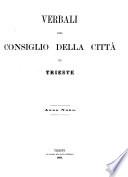
Verbali del Consiglio della Città di Trieste
Autore: Triest

Atti parlamentari
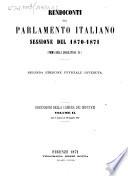
Rendiconti del Parlamento Italiano
Autore: Italien Parlamento
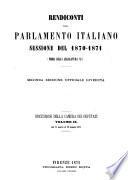
Discussioni della Camera Dei Deputati
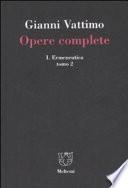
Opere complete
Autore: Gianni Vattimo
Numero di pagine: 303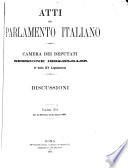
Atti del Parlamento italiano
Autore: Italy. Parlamento. Camera dei deputati
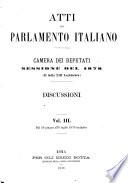
Atti parlamentari
Autore: Italy. Parlamento
Consists of separately numbered series of publications of the Parlamento as a whole, the Senato, and the Camera dei deputati. Each session is divided into Disegni di leggi; Documenti; and: Discussioni.

Atti parlamentari della Camera dei deputati discussioni
Numero di pagine: 2831
Tra le pagine
Autore: Gianfranco Tortorelli
Numero di pagine: 287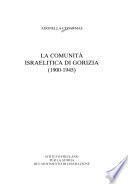
La comunità israelitica di Gorizia, 1900-1945
Autore: Adonella Cedarmas
Numero di pagine: 334Pp. 107-237 deal with the period 1938-45, describing the fate of the small Jewish community of Gorizia, numbering ca. 200 people. Focuses on the consequences of the anti-Jewish laws and, later on, of the Nazi occupation. By the end of the war, the Jewish community had disappeared; some Jews escaped and some were deported and killed. The appendix on pp. 239-287 contains lists of Jewish residents with some biographical information.
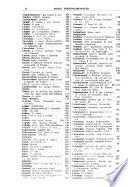
Guida generale di Trieste e commerciale della Venezia Giulia, Fiume, Sebenico, Zara

L'Olanda in pace
Autore: Enrico Morpurgo
Numero di pagine: 712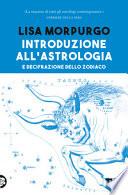
Introduzione all'astrologia e decifrazione dello zodiaco
Autore: Lisa Morpurgo
Numero di pagine: 368Vedi maggiori dettagli